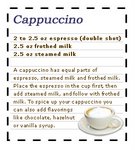Can't sleep? Wonder if the waiter really poured you decaffeinated coffee after dinner? Well you're not alone. A lot of people are asking who exactly is governing the world of decaffeination. The FDA? Or are they too consumed with the war on bioterrorism to regulate caffeine? We've got some answers. According to Diana Monaco, a Public Affairs Specialist for the United States Food and Drug Administration, decaffeinated coffee must have 97% of the caffeine removed in order to be classified as decaffeinated. Now, there are several different ways caffeine can be removed from coffee. The first, and what some consider an ideal way to remove the caffeine, is the Swiss Water Process. The coffee beans are soaked in extremely hot water using this method, until nearly all the caffeine is removed. Utilizing carbon dioxide as a natural element is another common way to decaffeinate coffee. Basically, water is added to the carbon dioxide creating sparkling water that acts as a magnet to attract all the caffeine molecules. This process is considered a bit more environmentally friendly than solvent methods, because its byproducts are natural and recyclable. Solvent methods of decaffeination, often referred to as the European Process, involve a chemical, usually methylene chloride, to steam open the beans and remove the caffeine. The beans are repeatedly rinsed with the methylene chloride and then dried before roasting. If there are any solvents remaining, they are burned off during the roasting process.
Each method, according to Monaco, should reduce the caffeine content to roughly 10 mg per 12 oz cup. However, the caffeine content of coffee beans varies widely even before the decaffeination process begins. For instance, Arabica coffee beans contain approximately half of the natural levels of caffeine than that of Robusta coffee beans. Therefore, the caffeine content of decaffeinated coffee fluctuates significantly, and can measure much higher than the compulsory 10 mg per 12 oz cup, according to Monaco. In a recent report, a familiar Seattle-based coffee chain was producing decaffeinated coffee with 22 mg of caffeine in a 16 oz cup. That's way above the limits set by the FDA – in fact, that same cup of decaf contains nearly an equal amount of caffeine as an 8 oz serving of Coke or Pepsi. “For many years people have been researching caffeine in products,” Monaco said. “You can see though that it would be hard to maintain consistency with coffee beans due to the difference in all types of beans that are available.” The FDA does not currently require food and beverage manufacturers to list caffeine levels on labels if the caffeine is naturally present, so manufacturers of coffee, tea, chocolate and soft drinks are not required to list caffeine on their label. “Caffeine in coffee is not a high priority for the agency,” Monaco said. It's only when caffeine has been added, like with over-the-counter prescription medications that you'll see it listed as an active ingredient.
Subscribe to:
Post Comments (Atom)











No comments:
Post a Comment